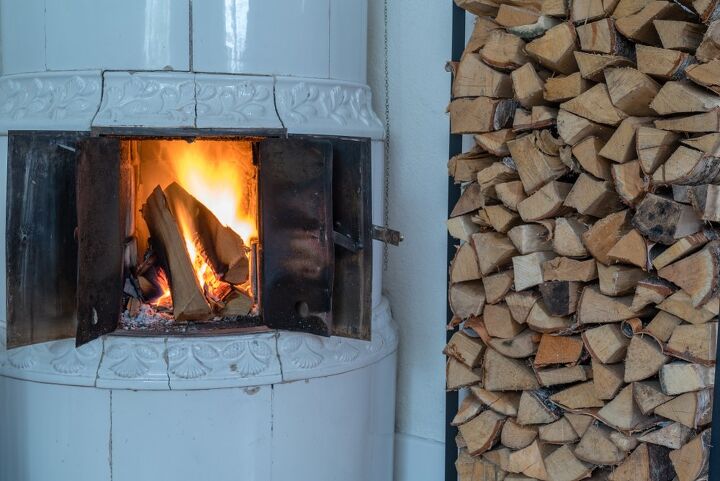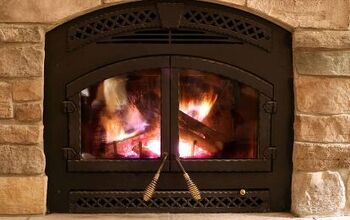How To Remove Tiles From The Wall Around Your Fireplace

The fireplace is both a decorative and functional part of the home. Its appearance can help elevate room décor while the warmth it provides is most welcome during the winter months.
Over time though, the once luxurious appearance of your fireplace may start to fade. The good news is that you can still restore it to its former glory. Bringing back the beauty of tile fireplaces starts with removing the old pieces.
Begin by positioning a flathead screwdriver over some of the tile grout and think of it as an oversized nail. Get a rubber mallet and tap the screwdriver until you form a crack in the grout. Use the screwdriver to open the crack in the grout then dislodge the tiles by slipping a putty knife under them.
The appearance of the fireplace can be altered in a variety of ways. Whitewashing and replacing the fireplace can produce great results and the same holds true if you use new tiles. Learn more about the proper process of removing fireplace tiles and other relevant topics by reading on.
Do You Need Handyman Services?
Get free, zero-commitment quotes from pro contractors near you.

How to Remove the Fireplace Tiles
The process of removing the tiles from the wall around your fireplace isn’t overly difficult. It can be quite tedious though, especially if you plan on cleaning up after. You may be tempted to leave it up to the professionals because of that.
However, professional tile removal can be costly. Given how simple the process is, it’s worth attempting on your own. Just make sure you have a free weekend before you undertake the process detailed below.
Step 1: Gather All the Tools You’ll Need
For this job, you’ll need a flathead screwdriver, a rubber mallet, and a putty knife. If you don’t have a rubber mallet, a hammer can work too. You may also need a pry bar instead of a putty knife to remove certain, stubborn tiles.
Step 2: Create an Opening in the Grout
Pick up the flathead screwdriver and position it over some of the grout covering the fireplace wall. Position the screwdriver in a way similar to how you’d angle a nail before it goes into a wooden surface.
With the flathead screwdriver in position, take the rubber mallet now and start to tap the screwdriver. Try to moderate the force you’re using.
If you’re using a hammer, be more careful with your strikes. Excessive force could damage the tiles and the fireplace wall itself. Continue chipping away at the grout until you’ve created the needed openings. This can take a while so take breaks if your hands get tired.
Step 3: Remove All of the Grout
Get the screwdriver again and move it closer to the opening you made. Angle it in such a way that it is in contact with more grout. Strike the screwdriver repeatedly to clear away the grout.
You’ll need to keep repeating those steps until you’ve removed all of the grout on the fireplace. Removing the grout at this stage will make it easier for you to dislodge the tiles.
Step 4: Dislodge the Tiles
Switch to the putty knife and slip that into the small opening under each individual tile. After getting the putty knife into position, try to move it vertically. Doing so should help free the tile from the adhesive.
If the tiles aren’t coming off easily, you may have to use a pry bar. Just be careful when using that pry bar because you could end up dealing significant damage to the fireplace.
Repeat what you’re doing with the putty knife and/or pry bar until all the tiles have been removed. Once again, remember to take breaks if your hands are tired.
How to Clean the Fireplace Wall after Removing the Tiles
Removing the tiles is not enough if you plan on redesigning your fireplace. You will also have to clean the fireplace wall the tiles were previously attached to. Follow the steps in this section if you want to clean the fireplace wall correctly.
Step 1: Gather Tools for Cleaning and Repairing
To clean up the fireplace wall, you’ll need a sturdy, metal scraper. You may also need to use either a citrus-based cleaner or hot water to remove stubborn segments of grout. A sponge or rag could come in handy too.
There’s a good chance that the fireplace wall itself is damaged so pick up some spackling paste and the putty knife. Go ahead and get some fine-grit sandpaper as well.
Step 2: Remove the Adhesive Residue
Reach for your scraper now and start forcing the remaining adhesive off the wall. Put some elbow grease into the scraping to remove as much of the adhesive residue as you can.
If you find that some of the tile adhesive is not coming off, you’ll need to perform some additional cleaning. Get your rag and let that soak in either the hot water or the citrus-based cleaner.
Use that soaked rag now to wipe over the stubborn segments of old adhesive. Continue wiping over the adhesive until they are soft enough to scrape away.
Step 3: Patch Up Damaged Portions of the Fireplace Wall
Your fireplace wall may have some nicks and gaps that will be problematic if you’re trying to re-tile. Make sure you cover them up first before you apply new tiles.
Put some spackling paste on your putty knife and use that to fill in the gaps. Smooth the spackling paste evenly to fill in the openings. Allow the spackling paste to dry before you proceed.
Step 4: Use Sandpaper on the Fireplace Wall
After removing the tiles and the adhesive, and touching up the wall, you can now prep it for tile application. You can do that by using some fine-grit sandpaper. Keep using the sandpaper until the fireplace wall is as smooth as it can be.
Should You Re-Tile the Fireplace Yourself?
Since you’ve removed the tiles and cleaned the fireplace wall yourself, you can handle re-tiling on your own, right? Well, you may want to hold off on that.
Removing tiles and cleaning up the fireplace wall are processes that are very different from tile application. The main reason they differ is because tile application is way more complex.
Tile application requires you to undertake several complicated tasks such as preparing the mortar and spreading it correctly. Cutting the tiles themselves so that they fit over the wall perfectly is a challenge. A small mistake could lead to the tiles being rendered unusable.
Oh, and you cannot forget about applying the grout again. That too is a delicate job that can compromise the tile quality if not handled properly.
Wanting to apply the tiles yourself is understandable, but that truly is a job best left up to the professionals. You’ve saved a significant amount of money by removing the tiles and cleaning the fireplace wall yourself. Use that money now to hire a professional who can help bring to life the fireplace you’ve always wanted.
Can You Restore the Old Tiles on the Fireplace Wall?
Perhaps you don’t want to go through the whole process of removing the tiles just to replace them. Or perhaps you’re trying to save money and don’t want to splurge on a new set of tiles. The good news is that you can restore the beauty of your fireplace without removing the tiles.
What you want to do first is to clean the existing tiles with a tile cleaner. Next, take some grout and use that to fill in any cracks along the existing tiles. Spread the grout evenly so that it’s flush with the tiles already in place.
Once the new grout segments are dry, paint over them. Choose a paint that matches the appearance of the tiles. Also, consider using a sealer to enhance the appearance of the restored tiles on your fireplace.
Do You Need Handyman Services?
Get free, zero-commitment quotes from pro contractors near you.

Related Questions
Why Are Tiles Often Used to Cover the Fireplace Wall?
Homeowners and home designers often use tiles to decorate fireplace walls for two reasons. Both of them are to the greater benefit of your home.First off, tiles are used for aesthetic reasons. They look fantastic next to a roaring fire. There’s an understated elegance that’s brought to life when the fire is framed by beautiful tiles. The other reason why tiles are frequently used is because of their durability. They are among the materials that can handle prolonged exposure to high levels of heat relatively well.To put it simply, if you want a gorgeous fireplace that will remain intact for a long time, use tiles. You can also use stones or bricks if you prefer, but you cannot go wrong by turning to tiles.
Why Do Fireplace Tiles Tend to Crack?
The tiles around your fireplace may crack and break if there is uneven heat distribution. Hot spots could cause certain tiles to expand and contract more than they should. Repair your fireplace if you fear that you have those uneven hot spots.
Can You Add New Tiles Without Removing the Old Ones First?
You can indeed place new tiles over the ones already on the fireplace wall. However, you’ll need more tools and materials to pull that off. It’s arguably easier to simply remove the old tiles first before adding the new set.

We are a team of passionate homeowners, home improvement pros, and DIY enthusiasts who enjoy sharing home improvement, housekeeping, decorating, and more with other homeowners! Whether you're looking for a step-by-step guide on fixing an appliance or the cost of installing a fence, we've here to help.
More by Upgraded Home Team



























